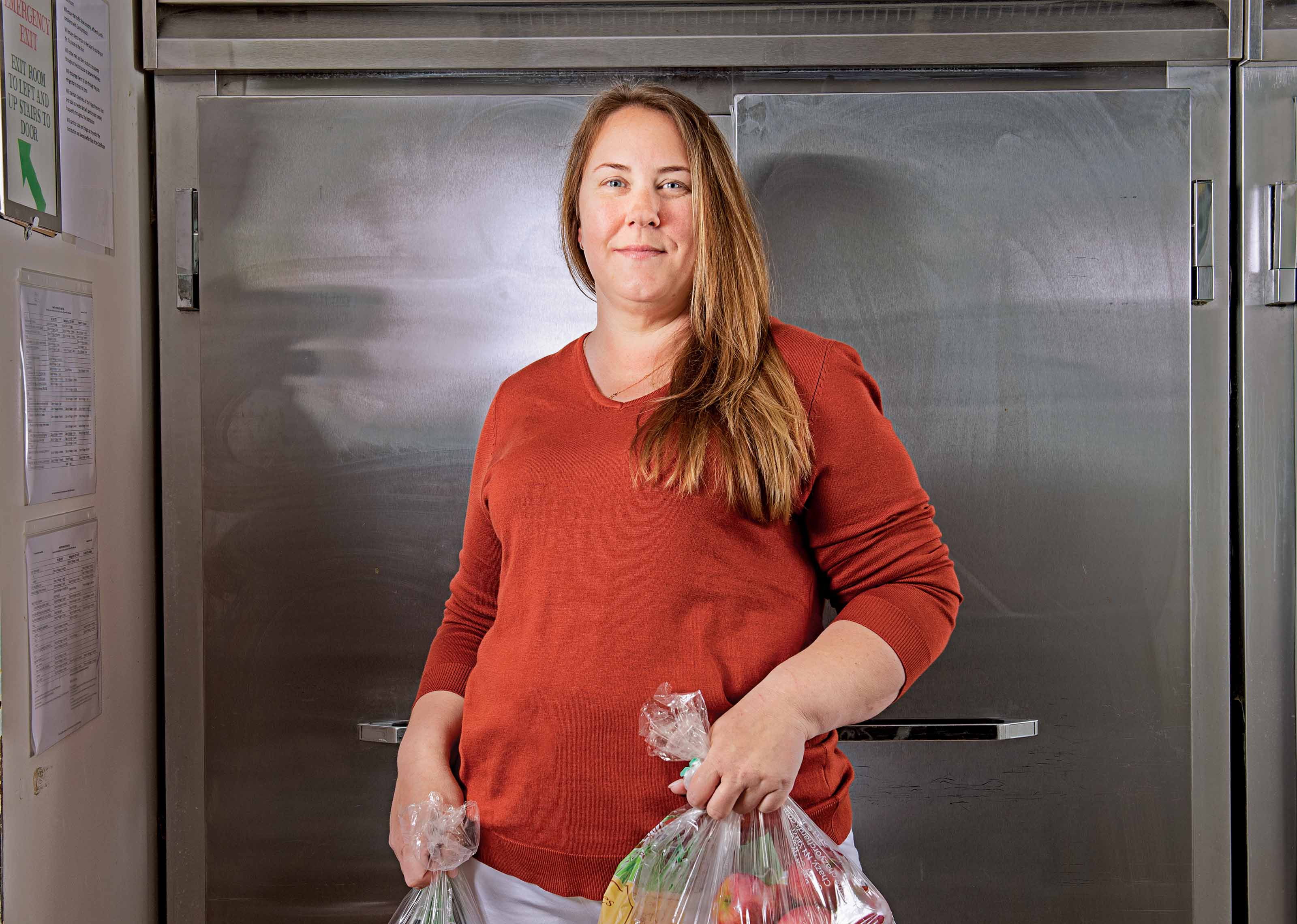An Inside Look at the Personal Finances of the Obamas and the Bidens
Too busy to run your own personal finances? They may be too busy running the country. Here’s what you can learn from their disclosures.

They may be the most powerful couples in the free world and rub shoulders with the likes of George Clooney and the Queen of England, but the Obama and Biden families face many of the same financial challenges as the rest of us.
"The vice-president in particular seems to be typical of what we see all the time," says Mark Wilson, a financial planner with the Tarbox Group, in Newport Beach, Cal. "People get busy with work and kids, and their finances never get cleaned up."
By contrast, the portfolio of presumptive Republican presidential candidate Mitt Romney is just what you'd expect from a multimillionaire with a blue-chip business pedigree and the ability to buy top-drawer advice: sophisticated, complex and well-diversified among many types of investments.

Sign up for Kiplinger’s Free E-Newsletters
Profit and prosper with the best of expert advice on investing, taxes, retirement, personal finance and more - straight to your e-mail.
Profit and prosper with the best of expert advice - straight to your e-mail.
But it's a different story for President Obama and Vice-President Biden. A review of the financial disclosures they filed in May uncovered what many of us see in our own financial lives -- neglect, inertia, poor diversification and spotty investment choices. In short, the First Families could use a money makeover. Kiplinger is here to help.
We called several seasoned financial planners and had them review the disclosures filed by Obama and Biden, evaluating both their debts and their investments. The planners saw plenty of areas that could use improvement -- starting with the president's and the veep's debts.
[page break]
Page 2 of 4
First step: refinance
In today's era of record-low interest rates, both the Bidens and the Obamas are supporting high-cost loans that could, and should, be paid off or refinanced, the planners say.
Obama, for instance, has a mortgage on his former residence in Chicago with Northern Trust. The loan, which was last refinanced in 2005, bears an interest rate of 5.625%. The financial disclosure forms don't say precisely how much is owed, listing both debts and assets in wide ranges -- from $500,000 to $1 million, in this case. But assuming that the loan is halfway between those two figures, the Obamas would owe $750,000 and could save some $600 a month (before taxes) by refinancing the loan at today's interest rates.
To be sure, loans this large don't get the record-low 3.5% rates that go to those with conforming mortgages, which have a maximum amount of $417,000. But even rates on jumbo loans are far more affordable. Listings at BankRate.com, for instance, indicate that the Obamas could qualify for a 4.3% rate (assuming that both Barack and Michelle Obama have pristine credit scores), saving $606 per month, or $7,277 per year, before taxes.
Biden owes considerably more, and although his mortgage rate is closer to market rates, he's got several personal loans that ideally ought to be repaid or rolled into a lower-cost home-equity line. Of course, that assumes he has enough equity to qualify, says Mark Brown, a certified financial planner with Brown & Tedstrom, in Denver.
Again assuming that both his debts and assets fall in the middle of the reported range, he'd have a $750,000 mortgage at 4.625%, plus a $32,500 home-equity line of credit at 5.25%. In addition, he owes $32,500 to the Senate Federal Credit Union, which is charging him 9.9% on the loan; and he has a $32,500 loan with Wilmington Savings at 7.5%. He also has a larger home-equity loan -- between $100,000 and $250,000 -- at the prime rate. Prime is only 3.25% today, so he'd be much better off if he could use that line of credit to repay the two higher-cost loans.
An even better idea would be to pay off some of this debt, with money that Joe and Jill Biden have sitting around in a half-dozen checking and savings accounts, says Wilson. The couple have nine checking and savings accounts at no less than six financial institutions. The bulk of the accounts have between $1,000 and $15,000 on deposit, and each earns less than $200 in annual interest, says Wilson. In addition, the couple own two certificates of deposit, worth between $100,000 and $200,000, on which they're earning between 2% and 5%, according to the disclosure statements.
To pay 9.9% and 7.5% on personal loans while earning less than 5% on savings makes no sense, says Wilson. Personal loans like these aren't even tax-deductible. "They need to consolidate these accounts and think about what loans they ought to pay off and which ones they need to leave alone," he says.
[page break]Page 3 of 4
Weak investment strategies
On the investment side, the styles of the Obamas and the Bidens are polar opposites. The Obamas are far too conservative and too poorly diversified, while the Bidens' investments are too spread out.
The Obama family has roughly $4.7 million in cash investments divided among checking and savings accounts and Treasury bills and notes. The couple hold just $325,000 in stocks. The stock accounts are fully invested in a Vanguard index fund that tracks Standard & Poor's 500-stock index, a widely followed measure of the broad U.S. stock market.
Vanguard is a good low-cost fund provider, and this particular fund is a good start for any portfolio, says Wilson, but it's certainly not diversified enough. It represents just 500 big U.S. companies. The couple should own some small-company stocks and, ideally, have some international exposure, too.
But the biggest problem with their portfolio is that it's 92% cash, says Brown. Cash investments are super safe, but they yield so little today that they're guaranteed to lose buying power to inflation over time. A couple this young -- the president and his wife are 50 and 48, respectively -- should have at least 40% of their assets in stocks, and, ideally, considerably more.
Sheryl Garrett, president of the Garrett Financial Planning Network, says she often sees this sort of overly cautious approach among people who have suddenly come into a windfall. While the couple wasn't poor before Obama became president, they've received millions of dollars in book royalties since Obama burst on the political scene.
Cash-flush, strategy-poor?
Investing millions of dollars in a relatively short period of time is nerve-wracking and often dangerous. So some couples who inherit money, sell a business or win the lottery freeze up, piling up cash while they try to find the time to assess their investment options. But the demands of work and home life can immobilize you for years, so the smartest approach, says Garrett, is to set up a long-term plan to dollar-cost average into stocks and build a more-diversified portfolio.
Dollar-cost averaging involves investing a fixed amount of money on a regular basis. In this case, the Obamas could take 1% or 2% of their $4.7 million cash stash each month and gradually invest it in preselected mutual funds or exchange-traded funds. They could stop the regular investments when they hit their targeted asset allocation, which would depend on their near-term needs for cash and their longer-term goals.
The right fund or funds for these automatic investments would depend on the couple's goals and whether they are willing to allocate their assets themselves or they will have a professional do it for them. Because no one appears to be managing the couple's investments, the Obamas might want to consider using a target-date fund, such as Vanguard Target Retirement 2030 (symbol VTHRX), which allocates assets among a mix of investments based on the time you have until you reach your goal. This particular fund is designed for people who expect to retire around 2030, when the president and his wife will be 68 and 66, respectively.
Or they could invest in a balanced fund, which invests in stocks and bonds, or in a mixture of pure stock funds and pure bond funds. Any of these choices promise far better long-term results than the Obamas' current cash-heavy portfolio, the planners agree.
The one caveat: If the Obamas plan to make a large expenditure over the near term -- for example, buying a new house or starting a business -- they'd want to keep some cash on hand (this is something they won't have to worry about until 2017 if Obama wins re-election in November). Still, $4.7 million in cash seems excessive.
[page break]Page 4 of 4
Socking it away for "the girls"
The one portion of the Obamas' portfolio that is exemplary is the college savings accounts they've established for their girls, Malia and Sasha. Each girl's account is funded with between $100,000 and $200,000 and is equally divided between two investment options -- one stock-based, the other oriented toward bonds -- offered by Illinois' Bright Directions 529 plan. "That's the most logical part of the portfolio," says Brown.
The Bidens, on the other hand, have too many investments. In addition to the pileup of bank accounts, they own six small cash-value life insurance policies, which build up equity over time. They have borrowed against the equity in the policies at interest rates ranging from 5% to 8%. They'd be better off cashing out those policies and paying off their other debts with whatever equity they have left in them, says Wilson.
Biden and his wife also have what appears to be a small tax-sheltered annuity that's invested in 11 sub-accounts, representing small-company stocks, large-company stocks, midsize-company stocks, international stocks, bonds -- you name it. The irony of this type of over-diversification is that it almost becomes the equivalent of owning an index fund. But because you've got to track so many investments, it's hard to measure whether you're doing as well as you would have if you had a simpler portfolio invested, for instance, in Vanguard Total Stock Market Index (symbol VTSMX).
A spokeswoman for the vice president says that Biden's finances have been structured to make avoiding conflicts of interest a higher priority than maximizing returns.
The Bidens' odd debt load
What disturbs Garrett is how much debt the Bidens have, given their income and age. The vice-president is 69; his wife is 61. Because of their numerous loans, the couple have just $215,000 in net worth (their assets minus their debts). Garrett says that if another couple had come to her with this balance sheet, she'd want them to explain why they'd taken out each loan. "You do this because you need to know whether the loans are symptomatic of a bigger problem," says Garrett.
Indeed, the only things that save the Bidens from being woefully underprepared for retirement are defined-benefit pensions -- the type that pay monthly stipends for life. Jill Biden is already receiving a $32,000 annual payment from a former employer. Joe Biden, who served in the Senate for more than 35 years, is also due a pension. The maximum amount he could receive based on the pension formula that was in place when he started his government career would work out to about 80% of his working income.
Because Biden is still working, the actual pension cannot be calculated yet. But Brown estimates that it would amount to at least the $60,000 per year that former senators currently receive, on average, and it is likely to be far more. That gives the couple more than $90,000 annually -- and they're likely to collect Social Security income, too. The generous steady payments for the rest of their lives means that they're unlikely to suffer the economic challenges faced by other families who didn't save enough for their golden years.
The Obamas and Bidens, says Brown, are "very different, but very typically American. President Obama has done very well with his own business interest, and his future looks good and secure. The Bidens have a lot of debt for their stage in life. If they didn't have those pensions, they'd be in real trouble."
Of course, politics could stand in the way of a sitting president rejiggering his portfolio -- or even refinancing his mortgage -- in an election year. (The White House failed to return phone calls and emails requesting comment for this story.) Because nearly any move could spark waves of criticism, it might make sense for the president to postpone a portfolio makeover until after Election Day.
NEXT: The Inscrutable Finances of Mr. Romney
Get Kiplinger Today newsletter — free
Profit and prosper with the best of Kiplinger's advice on investing, taxes, retirement, personal finance and much more. Delivered daily. Enter your email in the box and click Sign Me Up.

-
 Free IRS Tax Filing for 30 Million People: Will It Continue Under Trump?
Free IRS Tax Filing for 30 Million People: Will It Continue Under Trump?Tax Filing Direct File was piloted last year in 12 states and has since expanded to 25. But some wonder whether the program will last under the Trump administration.
By Gabriella Cruz-Martínez Published
-
 Financial Security vs Financial Freedom: What's the Difference?
Financial Security vs Financial Freedom: What's the Difference?Having the ability to pivot without worrying about financial support is where financial security becomes financial freedom.
By Justin Donald Published
-
 How to Find Foreclosed Homes: Best Foreclosure Listings Sites
How to Find Foreclosed Homes: Best Foreclosure Listings SitesMaking Your Money Last Find foreclosed homes for sale on these foreclosure listing websites. Search for properties on these free, paid or government sites.
By Bob Niedt Last updated
-
 Four Tips for Renting Out Your Home on Airbnb
Four Tips for Renting Out Your Home on Airbnbreal estate Here's what you should know before listing your home on Airbnb.
By Miriam Cross Published
-
 AI Regulation is Looming: Kiplinger Economic Forecasts
AI Regulation is Looming: Kiplinger Economic ForecastsEconomic Forecasts Find out what Washington and regulators have planned for artificial intelligence.
By John Miley Published
-
 Is Relief from Shipping Woes Finally in Sight?
Is Relief from Shipping Woes Finally in Sight?business After years of supply chain snags, freight shipping is finally returning to something more like normal.
By David Payne Published
-
 Economic Pain at a Food Pantry
Economic Pain at a Food Pantrypersonal finance The manager of this Boston-area nonprofit has had to scramble to find affordable food.
By Emma Patch Published
-
 The Golden Age of Cinema Endures
The Golden Age of Cinema Enduressmall business About as old as talkies, the Music Box Theater has had to find new ways to attract movie lovers.
By Emma Patch Published
-
 Pricey Gas Derails This Uber Driver
Pricey Gas Derails This Uber Driversmall business With rising gas prices, one Uber driver struggles to maintain his livelihood.
By Emma Patch Published
-
 Smart Strategies for Couples Who Run a Business Together
Smart Strategies for Couples Who Run a Business TogetherFinancial Planning Starting an enterprise with a spouse requires balancing two partnerships: the marriage and the business. And the stakes are never higher.
By Alina Tugend Published